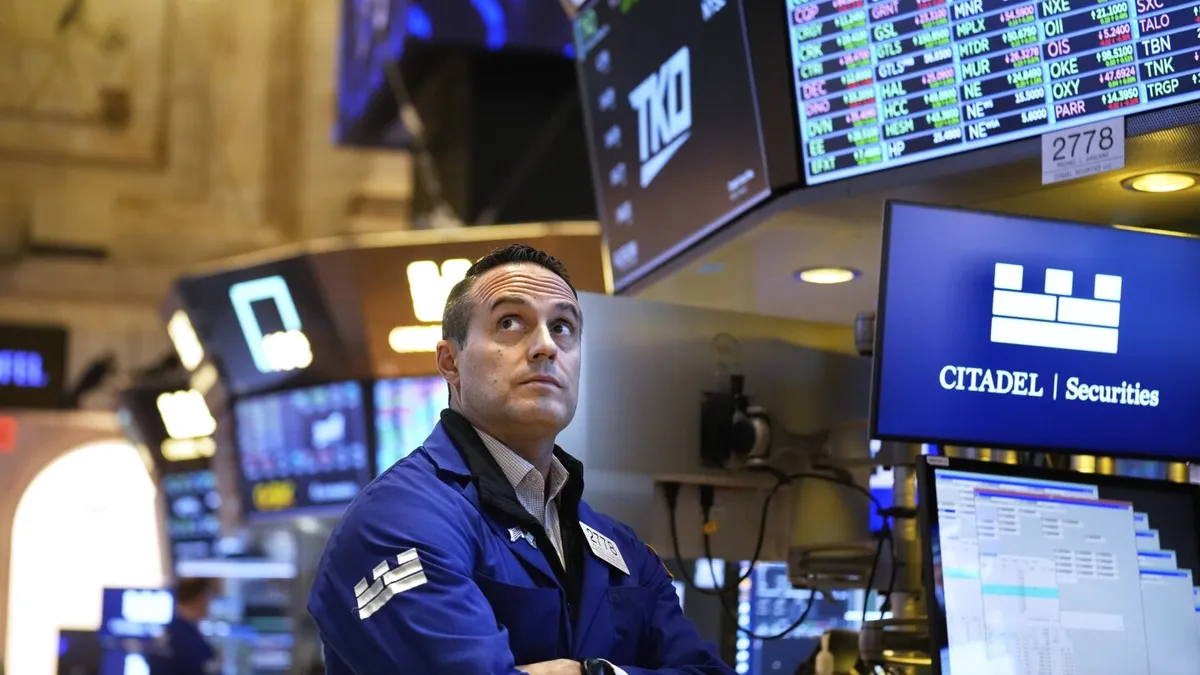
On Friday morning, Wall Street experienced a notable decline, as stocks fell sharply, pushing the market toward its fifth consecutive weekly loss. The S&P 500 index decreased by 0.6%, marking its worst weekly losing streak in nearly two years. As of 11:19 a.m. Eastern Time, the Dow Jones Industrial Average dropped 228 points, or 0.5%, while the Nasdaq composite also fell by 0.6%. These declines highlight the ongoing challenges facing investors in the current economic climate.
The technology sector has been a significant contributor to the market's recent struggles, experiencing a reversal from its previous year’s strong performance. As some of the most valuable stocks on Wall Street, technology shares have an outsized influence on overall market movements. Notably, Nvidia saw a decline of 1.7%, while Microsoft fell by 0.6%. This downturn reflects the broader uncertainties in the market, with investors grappling with the implications of various economic factors.
For weeks, stocks have been under pressure due to growing uncertainty regarding the future of the U.S. economy. A potential trade war between the United States and its key trading partners threatens to exacerbate inflation, negatively affecting both consumers and businesses. Currently, inflation remains stubbornly above the Federal Reserve's target of 2%, and the imposition of tariffs may hinder the central bank's efforts to control rising prices.
Several major companies have issued warnings about their financial outlooks, further troubling investors. Nike shares plummeted by 6.5% after the company forecasted a significant revenue decline for the current quarter, attributing the dip to geopolitical dynamics and new tariffs imposed by the Trump administration, alongside a decrease in consumer confidence. Similarly, FedEx experienced a 9% drop in its stock price after announcing projected flat-to-slightly-down revenue year-over-year and reducing its profit guidance. Homebuilder Lennar also fell by 5.5%, citing high interest rates and inflation as critical factors affecting its sales outlook.
The ongoing issue of high interest rates continues to challenge the housing market. The Federal Reserve recently decided to maintain its benchmark interest rate during its latest meeting as it evaluates the potential impacts of tariffs and other U.S. policy changes. After cutting interest rates through the end of last year in response to easing inflation, the Fed has opted for a steady approach in 2025, recognizing that while lower rates can stimulate the economy, they may also contribute to higher inflation.
Although Fed Chair Jerome Powell has noted that the economy remains solid, he has emphasized the challenges posed by uncertainty in making accurate forecasts. Recent economic reports concerning home sales, industrial production, and unemployment have reinforced the perception of a resilient economy. However, data on consumer sentiment and retail sales indicate a growing caution among consumers, suggesting a more complex economic landscape.
In the bond market, Treasury yields remained relatively stable, with the yield on the 10-year Treasury rising slightly to 4.24% from 4.23% observed late Thursday. Additionally, the airline industry faced challenges due to a fire that caused a power outage at London’s Heathrow Airport, disrupting global travel for hundreds of thousands of passengers. Ryanair Holdings experienced a 1.6% decline, while U.S.-based airlines, including American Airlines and United Airlines, remained relatively steady amidst the turmoil.
International markets mirrored the downward trend, with Europe’s major indices falling. The FTSE 100 in Britain dropped by 0.6% after the Bank of England decided to hold its main interest rate steady. In Germany, the DAX index fell by 0.7%, following a vote by German lawmakers to approve a budget that will increase spending on defense and infrastructure.
As the week progresses, investors will continue to watch for updates on the economic landscape and corporate earnings reports, which will be critical in shaping market sentiment going forward.